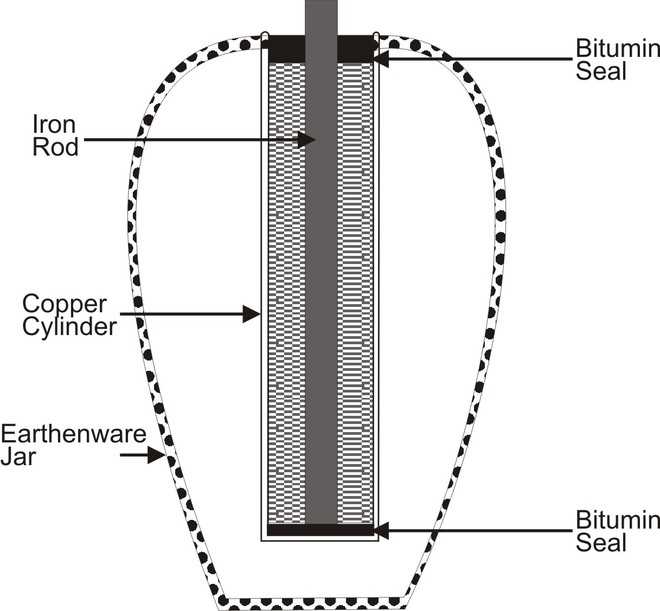H. Kishie Singh
In the last couple of years, India has made some wonderful but weird claims. We discovered gravity; we had aeroplanes thousands of years ago, we managed plastic surgery as a fine art. Consider the grafting of Lord Ganesha’s head! But in one sphere the Mesopotamians were ahead of us.
Today, whether you drive a humble Alto or a Nano or the most expensive luxury car, they all have one thing in common. The battery!
Irrespective of which car engine it fires up, without the battery the car would be hand cranked started or push started. And believe it or not, the battery predated the udan-khatolas. It’s the Baghdad Battery.
Sometimes in 1936, when the world was a comparatively safe and sensible place, work started on the railway line for Baghdad. As the workmen were digging, near a village called Khujut Rabu’a, they unearthed a tomb dating back to the Parthian era, about 250 BC.
Work stopped and archaeologists descended upon the site. Amongst the many strange and interesting objects found was an oval clay pot. It had a copper tube, closed at one end, an iron rod and crumbling pieces of bitumen. Yes! Copper, iron and bitumen, all in a handmade clay pot! Over two thousand years old!
It was carefully put aside and the archaeologists and scientists scratched their heads, what was this object? The excavations of the Pyramids had not turned up anything like this.
Exact models were made of the jar, its components and tests carried out at various laboratories who found these replicas were working models.
All evaluations and observations pointed in one direction. It was a dried out battery.
In one experiment in America, grapefruit juice, orange juice and acetic acid were poured into the copper tube. With the acetic acid, the model generated a weak electric current which lasted for over two weeks.
The origin of this simple but ingenious ‘battery’ had been established. It is the purpose that has confounded the scientists.
Almost 2,000 years later, Alessandro Volta, a pioneer of electricity and power is credited as the inventor of the electric battery.
Fast forward to the beginning of the twentieth century. Automobiles had been on the road for almost 10 years. They ran quite well. However, to crank-start was the only way to fire up the engine. This had one great drawback. Sometimes the engine backfired, swinging the crank handle backwards, violently. ‘Kick-back’ was the term to explain this.
Sometime in 1910, one Byron Carter, while driving along a rural highway in Michigan noticed a lady stranded on the highway. He stopped to help her crank-start her car and became a victim of the kick-back syndrome. Carter broke his jaw. While recovering, gangrene set in and he died. His very good friend, Charles Kettering of DELCO (Dayton Electrical Company) was working for General Motors, which was Cadillac and Buick at that time.
Carter’s sudden death upset Kettering who started to work on an electric starter. No more kick-backs, he swore to himself.
The 1912 Cadillac bore the fruit of his endeavours. It was the first production car with a built in electrical self starter. Exactly the same that you have in your car today fired up by a battery. The battery is a descendent of the Baghdad Battery. And Carter’s accident was the genesis of the self-starter motor.
Happy Motoring!
Unlock Exclusive Insights with The Tribune Premium
Take your experience further with Premium access.
Thought-provoking Opinions, Expert Analysis, In-depth Insights and other Member Only Benefits
Already a Member? Sign In Now











